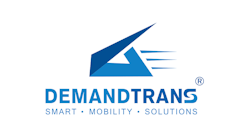Enhancing Public Agency Analysis Skills for Demand Responsive, Microtransit Transportation
It is becoming quite clear that the traditional domain of public transportation agencies in the United States and Canada as providers of fixed-route services, supplemented by services for the disabled, has to be expanded. They cannot be left out of the discussion as numerous new services are being invented and implemented. Some of them can complement, others can compete, with the traditional services. They may even do both at different times of the day. It is also clear that Mobility as a Service (MaaS) will spread rapidly after some institutional obstacles are removed and largely unanswered research questions that dampen the enthusiasm by city governments are explored further.
Some of these questions related to where and when to put demand-responsive services, and what type of DRT services, are being studied by pilot testing. This is a vital step toward ensuring proposed service enhancements promote efficiency, enhance effectiveness, or better yet, accomplish both. Given it can cost a significant amount of money and impose a substantial risk that revenues generated from any new service will be below expectations, it is tempting for public transit agencies to accept offers from private operators to fund and design pilots under demonstration agreements. However, there are potential problems with this approach.
Pilots come with the intent of expansion by public agencies should they prove successful. Thus, it is wise for planners representing the public purpose and agency mission to participate in these pilots both in analysis and in funding. With many new privately held entrants to public transit emerging in the past several years — many of whom are intent on introducing new technology to the public transit sector in the hope they can profit from the ongoing renaissance in public transit — we see a potentially dangerous cycle being perpetuated that may in the long-term harm public transit agencies more than it helps them. We call this phenomenon, “The Subsidization Effect.”
It is no secret that the emergence of companies like Uber, Lyft and other extraordinarily well-funded, venture capital-backed transportation-related startups provide an array of possibilities for public transit professionals. With transportation capacity effectively commoditized across America, the allure of inexpensive access to transport capacity aided by progressive new technology, understandably entices agencies to supplement, or in some cases, even supplant public transit services altogether. However, what is often left out of the equation in assessing the long-term merits of such approaches is the fact much of what is being offered in terms of capacity and technology by private vendors is heavily subsidized and as such, likely not sustainable. In other words, a well-intentioned short-term interest in reducing costs or expanding service by outsourcing services without understanding the full long-term impact of these changes may set into motion a dangerous cycle that ultimately, places public transit agencies on a perilous (and unsustainable) path. Especially so if the agency planners and engineers are not actively participating and thereby not sharpening their skills as well.
Furthermore, transit agencies traditionally depend upon complete datasets about all linked and unlinked trips connecting to their networks. But ownership of the data may reside with the private operators, who understandably don’t want to share their hard-earned experience with their competitors. Yet this information is vital for transit agencies to own in order to improve their responsiveness to public need, to set fares, and match supply to demand.
The remedy? Why not look to integrate a means of providing checks and balances into public transit projects by including a third party with expertise in analysis and planning into the equation. For instance, when venture-backed companies use Development Agreements to provide heavily subsidized, no-cost pilot projects to city officials, why not insist on supplementing their project teams with an external expert (working on behalf of the subject agency) with the skills, training and sophisticated analytical tools to provide a fair, thorough assessments of the short and long-term merits, as well as potential long-term pitfalls, of the proposed solution or service?
The interest in promoting transit transformation has never been greater. As such, scores of new entrants are being drawn to the field which is promoting innovation. That's clearly a good thing. However, most (if not all) are appropriately driven as much by profit motive as they are enthusiasm to provide more flexible, affordable options to transit customers. This is capitalism in action and we believe, also a good thing. Yet the danger exists that well intentioned professionals, under increasing pressure to cost costs, enhance service, or both, may be lured into making changes without the benefit of fully and objectively understanding the short- and long-term implications of such changes to their network-at-large. Decision-making about levels of service should ultimately belong to the agency — who in turn need mechanisms to control the fleet size and fleet characteristics available for their services — whether that is pricing, guaranteed quality of service parameters etc.
Why not take the added step of infusing an external assessment agent with the training, experience, and tools to ensure things are what they seem, both in the present and the future. It must be said that this approach to fostering professional planning, assessment, and reporting of ongoing pilot efforts in public agencies enables smaller firms with niche experience to add their unique value to these important endeavors. Furthermore, it could provide an avenue for universities struggling to find research funds not focused on technology development to support the would-be transit professionals of tomorrow, today.
Finally, such a prudent, thoughtful approach also protects the consumer by fostering long-term competition amongst vendors to supply not only the newest technology or unsustainable subsidized private services, it continually improves the effectiveness and efficiency of public services for the people it is designed to serve — the taxpayer.
John E. Michel is a managing partner at Switch Mobility USA and Pekka Möttö is a managing partner at Switch Mobility Global and CEO of Kyyti Group.



